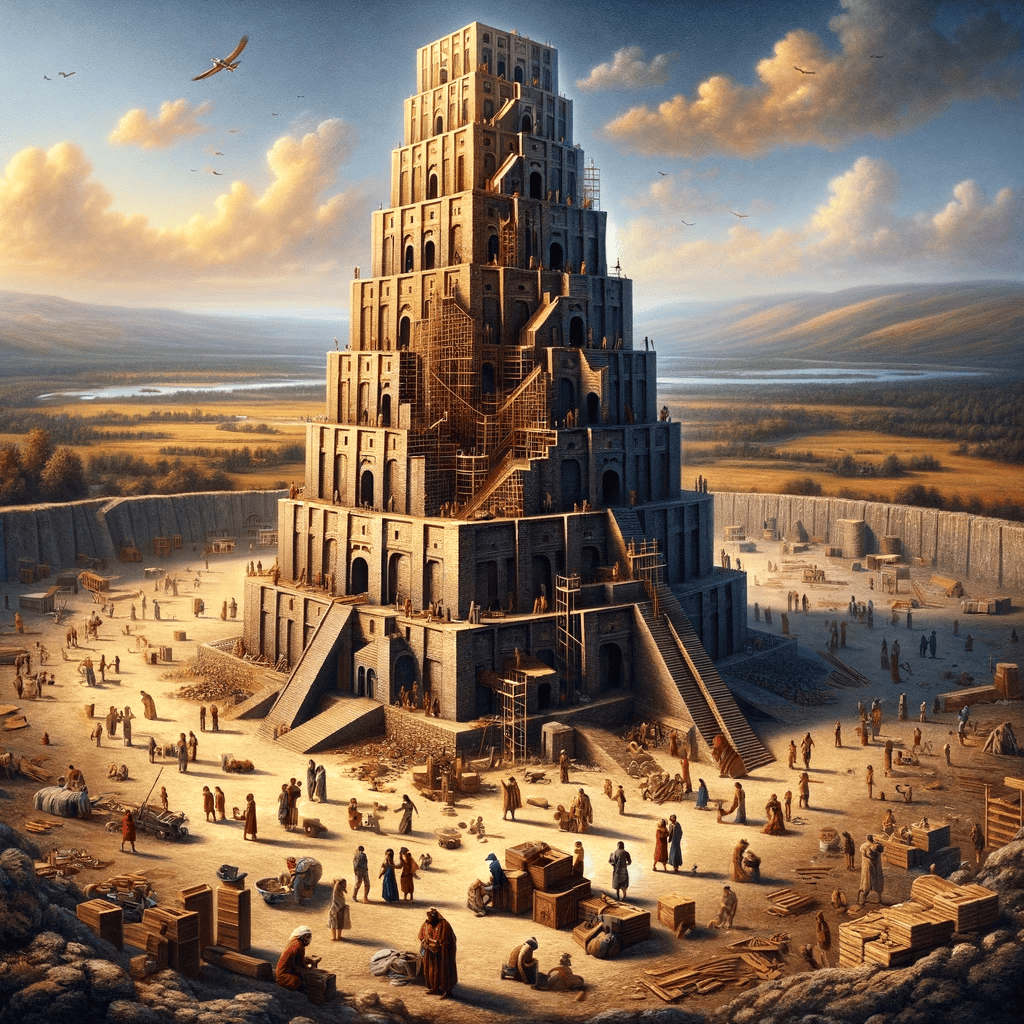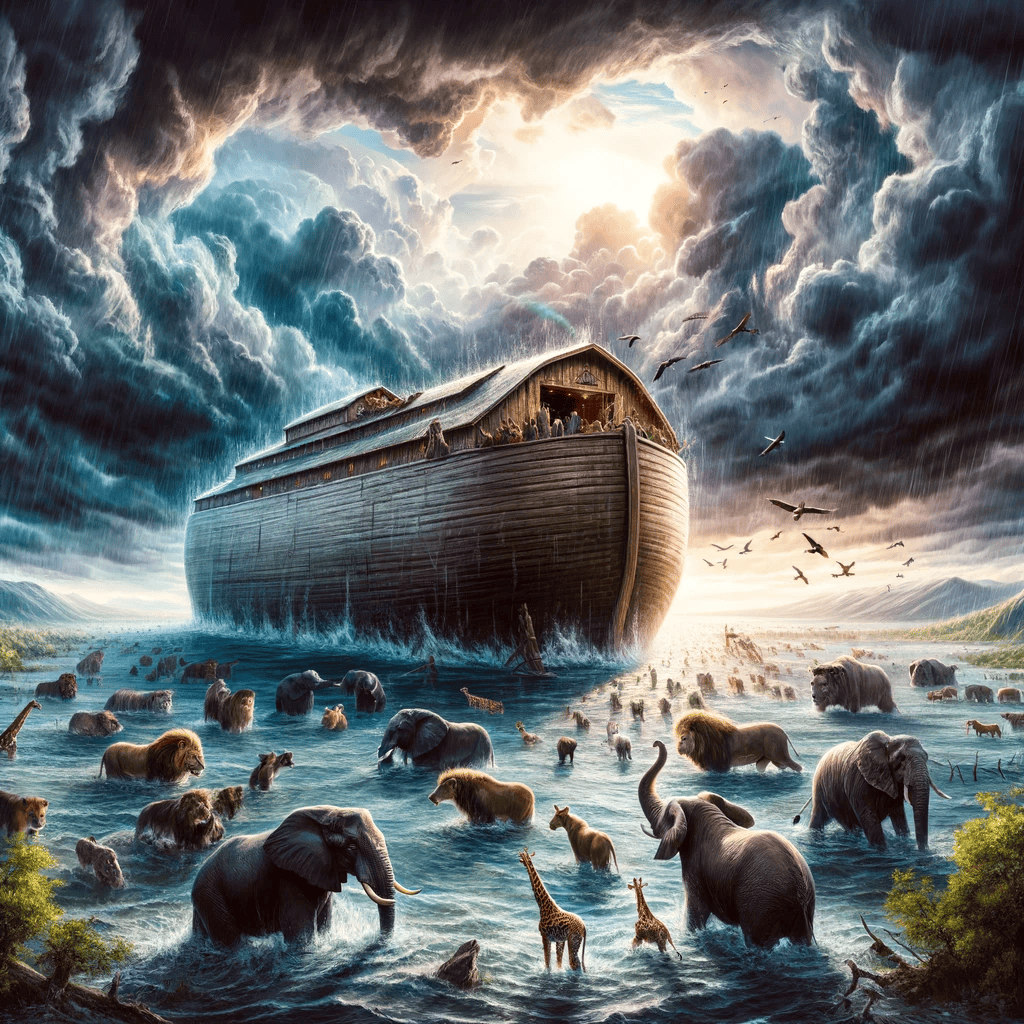
The story of Abraham (originally Abram) and Sarah (originally Sarai) spans from Genesis 12:1 to 25:11, covering their journey of faith, promise, and legacy. This narrative is foundational to the Abrahamic faiths, illustrating themes of faith, obedience, and the fulfillment of God’s promises.
The Call of Abram (Genesis 12:1-9): God calls Abram to leave his country, his people, and his father’s household for a land that God would show him. God promises to make Abram into a great nation, to bless him, and to make his name great. Trusting God, Abram, along with Sarai and Lot, his nephew, departs from Haran, journeying to Canaan. There, God appears to Abram, promising that this land would be given to his offspring. Abram builds an altar there to the Lord.
Abram and Sarai in Egypt (Genesis 12:10-20): Facing famine, Abram and Sarai go down to Egypt. Fearing for his life because of Sarai’s beauty, Abram asks her to say she is his sister. Pharaoh takes Sarai into his palace, treating Abram well for her sake, but God afflicts Pharaoh’s household with serious diseases. Pharaoh, realizing the truth, rebukes Abram and sends them away with all their possessions.
Abram and Lot Separate (Genesis 13): Abram and Lot separate to avoid conflict between their herders, with Lot choosing the fertile plains of Jordan and Abram remaining in Canaan. God reaffirms His promise to Abram, promising him descendants as numerous as the dust of the earth.
Abram Rescues Lot (Genesis 14): When Lot is captured in a regional conflict, Abram leads a successful rescue mission. Melchizedek, king of Salem, blesses Abram, who gives him a tenth of everything.
The Covenant of the Pieces (Genesis 15): God formally establishes a covenant with Abram, promising him countless descendants and the land of Canaan. God also foretells the future enslavement and liberation of Abram’s descendants.
Hagar and Ishmael (Genesis 16; 21:8-21): Sarai, being barren, offers her Egyptian maidservant Hagar to Abram to bear a child. Hagar conceives Ishmael, causing strife between her and Sarai. God later promises Hagar that Ishmael will father a great nation.
The Covenant of Circumcision (Genesis 17): God changes Abram’s name to Abraham and Sarai’s to Sarah, establishing circumcision as a sign of the covenant. God promises Abraham a son by Sarah and the multiplication of his descendants.
The Birth of Isaac (Genesis 18-21:7): Three visitors (angels) announce to Abraham that Sarah will bear a son. Sarah laughs in disbelief but conceives and bears Isaac as God had promised.
The Test of Abraham (Genesis 22): God tests Abraham’s faith by asking him to sacrifice Isaac. Abraham obediently prepares to do so, but an angel stops him at the last moment. This act confirms Abraham’s fear of God, and God reiterates His promises.
Sarah’s Death and Abraham’s Later Years (Genesis 23-25:11): Sarah dies at the age of 127, and Abraham purchases a burial site at Machpelah, where he later buries Sarah. Abraham marries Keturah, has more children, but designates Isaac as his chief heir. Abraham dies at the age of 175 and is buried alongside Sarah by Isaac and Ishmael.
Their story, rich with themes of faith, promise, and the testing of belief, not only provides a foundational narrative for Judaism, Christianity, and Islam but also offers timeless lessons on obedience, patience, and the complexities of human faith in divine promises.
The Legacy of Abraham and Sarah: The legacy of Abraham and Sarah extends far beyond their lifetimes, influencing countless generations. Their faithfulness, despite moments of doubt and missteps, exemplifies a profound trust in God’s promises. Abraham’s willingness to leave his homeland and his family at God’s command, and his readiness to sacrifice his son Isaac, are seen as ultimate acts of faith. Sarah’s journey, particularly her struggle with barrenness and her eventual joy at Isaac’s birth, speaks to the themes of waiting and fulfillment in God’s timing.
The Significance of Their Story:
- Covenant Relationship: The story of Abraham and Sarah is pivotal in understanding the concept of covenant in the biblical narrative—a binding agreement between God and His people, with promises and obligations on both sides. This covenant, marked by the promise of land, a multitude of descendants, and a special relationship with God, is foundational to Jewish, Christian, and Islamic theology.
- Faith and Righteousness: Abraham is often referred to as the “father of faith,” exemplifying the belief that faith in God’s promises accounts for righteousness. This principle underpins significant theological concepts in both the Old and New Testaments, as well as in Islamic teachings.
- The Test of Faith: The binding of Isaac (the Akedah) is a profound story of faith, obedience, and deliverance, illustrating the depth of Abraham’s commitment to God. This narrative has been interpreted in various ways across religious traditions, often seen as a test of faith or a symbol of ultimate surrender to God’s will.
- Prophetic Lineage: Abraham and Sarah are directly linked to the lineage of Jewish patriarchs and matriarchs, and through them to the lineage of King David and, in Christian belief, to Jesus Christ. In Islam, Abraham (Ibrahim) is recognized as a prophet and a patriarch of Islam, with Ishmael (Ismail) considered the ancestor of the Arab people and a prophet.
- Interfaith Importance: The story of Abraham and Sarah holds a place of reverence in Judaism, Christianity, and Islam, making it a significant point of interfaith dialogue and understanding. Their narrative serves as a common ground for exploring shared beliefs and values among these faith traditions.
Enduring Lessons: The enduring legacy of Abraham and Sarah teaches lessons about the complexity of faith—encompassing trust, patience, trials, and fulfillment. Their story reminds believers of the importance of trusting in divine promises, even when those promises seem delayed or impossible by human standards. It also speaks to the value of perseverance in faith and the belief in a purposeful journey guided by a higher power.
In summary, the narrative of Abraham and Sarah is not just a story of ancient figures but a continuing source of inspiration, teaching about the nature of faith, the importance of obedience to divine will, and the enduring promise of God’s blessings and guidance through the challenges of life.




